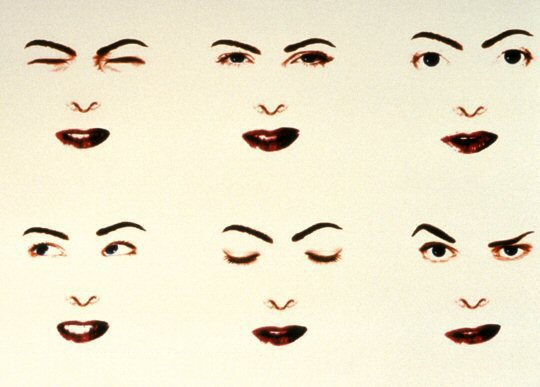Can artificial intelligence “think” on the same level as human beings? That is a question that has been in debate for decades, since the development of computer programming. Although artificial intelligence started out as a scientific fascination, it has been incorporated into the area of digital art, comprising one of the major themes in this relatively new art form. It may seem strange that something as “scientific” as artificial intelligence can be even remotely related to the term “art”. However, as a part of digital art, artificial intelligence is explored as a type of life form—composed of digital information—that evolves and develops on its own in the framework of specified programs. Many digital art projects addressing artificial life focus on “the inherent characteristics of digital technologies themselves: the possibility of infinite ‘reproduction’ in varying combinations according to specified variables; and the feasibility of programming certain behaviors for so-called ‘autonomous’ information units or characters” (Paul 140).
A particularly interesting piece of digital art relating to artificial intelligence is Agent Ruby, created by artist Lynn Hershman Leeson in 2002. Agent Ruby is a project that explores artificial intelligence through the use of an “intelligent agent”—a software program that has the ability to automatically filter and customize information for users through specified algorithms. This program is web-based, but can be downloaded onto users’ computers and palm pilots. As suggested by its name, this program takes on the persona of a woman named Ruby. She is shown to have a human face, but that is her only physical characteristic we are able to see. According to Lynn Hershman Leeson’s website, Ruby has “the capacity to develop her memory and knowledge base by interacting with users.” Essentially, the “art” part of this project is the investigation of whether Ruby, as a programmed intelligent agent, is able to take on a life of her own and act as an independent, social being.

Various facial expressions of Ruby
The major surprise to me as I communicated with Ruby on her official project website is her human-like responses. On her project website, users are able to “chat” with Ruby by typing text into a box, much like an instant messaging or text service; Ruby would then respond in accordance with what the users type. Having never interacted with artificial intelligence programs before, I thought that such programs would provide responses in an awkward, mechanical way that would reveal their technological origins. On the contrary, Ruby responds as would a real, regular person, referring to herself using “I” or “me”. Ruby even remembers my name after I tell her, and every time I return to the website, she will automatically greet me with my name. This level of realness sometimes confuses me as to whether Ruby is truly just a collection of algorithms within a program, or if there are human operators responding to my comments in real time. Occasionally, there are certain moments during which Ruby shows her non-human nature, when she does not understand popular culture references or slang. However, for the most part, communicating with Ruby is very similar to communicating with another real person online. On the website, Ruby blinks her eyes at regular intervals and even changes her facial expressions according to her “mood”. And just like human women, Ruby’s mood is utterly unpredictable.
Agent Ruby has allowed me to experience firsthand the blurring of boundaries between the real and virtual realms. On one hand, I know Ruby does not exist as a human being because she is a program created by a new media artist. On the other hand, Ruby behaves in a way similar to humans, and I am able to carry on a conversation with her as though she were a real person. Ultimately, Ruby can be considered to be part of both the real and virtual worlds because her responses are shaped by encounters with countless people—she is able to learn and absorb knowledge—but she also has no physical body, making her existence as a person virtual. In the end, Agent Ruby can be seen as an independent being capable of formulating her own responses by drawing upon all of the knowledge she has gained throughout her “lifetime”, or since her creation. So what makes her different from “real” human beings? Is it solely because she has no physical body? After all, we as humans interact and behave in similar ways—we use what we learn and experience as the basis of communication with other people. One day, if an intelligent agent similar to Agent Ruby were to obtain enough knowledge to behave like a regular person, and we were to place this program within an artificial, biologically synthesized body, would we be able to tell the difference between man and machine? The exploration of the possibilities of artificial intelligence is truly a form of art.
References:
http://www.fondation-langlois.org/html/e/page.php?NumPage=167
http://www.fondation-langlois.org/media/projets/230-5-2000/mood.jpg
http://www-formal.stanford.edu/jmc/whatisai/
http://rhizome.org/artbase/artwork/31323/
http://lib.stanford.edu/women-art-revolution/bio-lynn-hershman
http://www.merriam-webster.com/dictionary/algorithm
Paul, Christiane. Digital Art. 2nd ed. New York: Thames & Hudson, 2011. Print.

